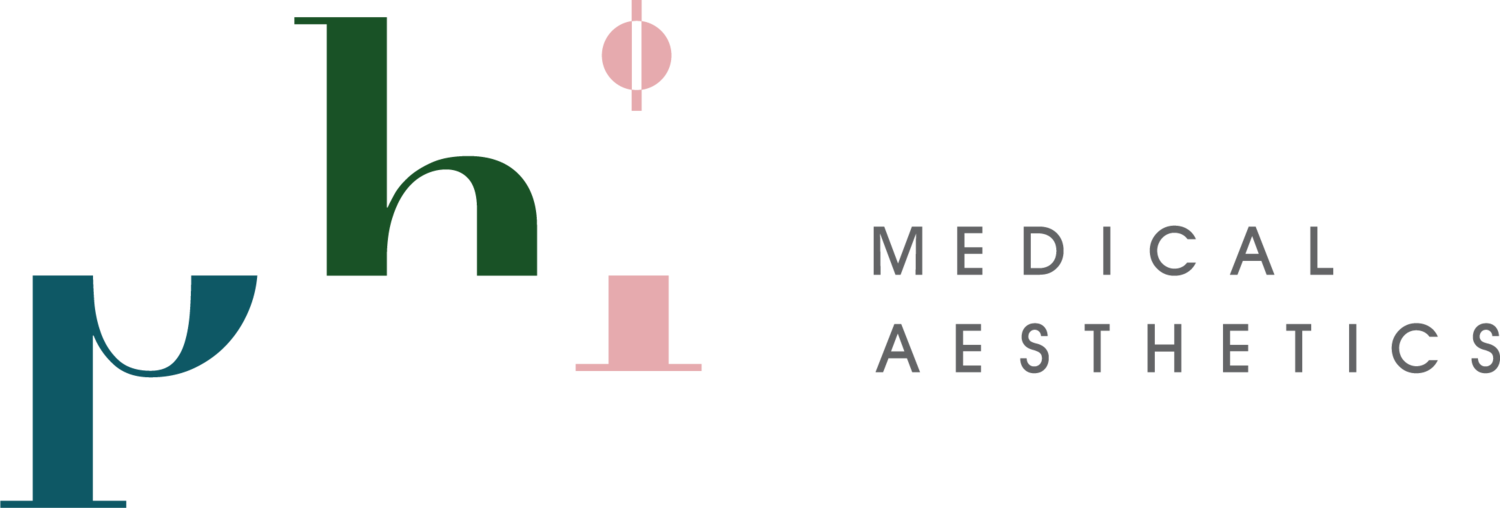A CLINICAL GUIDE TO DYNAMIC FACIAL LINES
Dynamic facial lines (the creases that appear when we express ourselves) are a natural part of life. However, many people seek to soften their appearance to maintain a refreshed look that still feels authentic. This comprehensive guide explains the science behind how these lines form, the factors that influence them, and the professional, clinician-led approach we take at PHI Medical Aesthetics to assess and manage them. Our goal is to provide you with the information you need to make informed, confident choices about your skin health.
Understanding and Managing Dynamic Facial Lines
What are dynamic facial lines?
Dynamic facial lines are formed by the repeated contraction of underlying facial muscles. When you smile, squint, frown, or show surprise, these muscles pull on the overlying skin, creating temporary creases. In our youth, the skin's high levels of collagen and elastin allow it to snap back easily, and the lines disappear once the expression is relaxed.
Over time, several factors cause these lines to become more permanent and visible even at rest (at which point they are known as static lines):
Age and skin structure: As we grow older, our bodies produce less collagen and elastin. These proteins are the building blocks that help keep our skin firm and elastic. This natural decrease means our skin becomes thinner and less able to bounce back, making it harder for it to smooth out after our muscles contract.
Sun exposure: According to the Canadian Dermatology Association, ultraviolet (UV) radiation is the leading cause of premature skin aging. It speeds up the breakdown of collagen and elastin, which weakens the skin and makes dynamic lines more visible.
Lifestyle factors: Habits such as smoking, poor nutrition, and inadequate hydration can impair skin health and contribute to the formation of lines and wrinkles, as noted in guidance from Health Canada on skin health.
Genetics: Your genetic makeup can play a role in how your skin ages and your predisposition to developing certain types of facial lines.
Common Areas of Concern We Assess
Our clinicians have extensive experience assessing the unique patterns of dynamic lines across the face. Common areas patients ask us to evaluate include:
Crow's feet: Lines that radiate from the outer corners of the eyes, often associated with smiling and squinting.
Frown lines (glabellar lines): The vertical "11" lines that appear between the eyebrows from frowning or concentrating.
Forehead lines: Horizontal lines that run across the forehead, caused by raising the eyebrows.
"Bunny lines": Wrinkles that appear on the bridge of the nose.
Lip lines: Fine vertical lines around the mouth.
Marionette lines: Creases that run from the corners of the mouth down to the chin.
Chin dimpling ("cobblestone" chin): An uneven or pebbly texture on the chin caused by the mentalis muscle.
Vertical neck bands (platysmal bands): Muscles in the neck that can become more prominent with age.
Brow position and jawline definition: Assessing how muscle activity influences the overall shape and contour of the brows and lower face.
The PHI Consultation
The best results come from a plan tailored specifically to you. That's why every patient's journey at PHI begins with a thorough and personal consultation. It’s our chance to get to know you, and for you to understand all your options in a comfortable, professional setting.
Here’s what you can expect during our time together:
A discussion of your goals: We start by listening. What are your concerns? What does a "refreshed" look mean to you? Understanding your personal aesthetic goals is our first priority.
A thorough medical history review: We’ll review your full medical history, including any health conditions, allergies, and medications, to ensure any potential treatment is appropriate for you.
An expert facial analysis: Our experienced clinicians will assess your facial anatomy, skin quality, and the specific patterns of your muscle movements. This detailed analysis allows us to understand the underlying causes of your concerns.
Developing a holistic treatment plan: Based on our assessment, we’ll outline a personalized plan with a range of suitable options. This plan is designed to be conservative and tailored to enhance your natural features.
A transparent review of risks and expectations: We believe in informed consent. We’ll openly discuss the potential risks, benefits, alternatives, and expected range of outcomes for any proposed treatment, ensuring you have all the necessary information needed to make an informed decision.
Treatment Options That May Be Discussed
Depending on your individual assessment and goals, your clinician may discuss a multifaceted approach to managing dynamic facial lines and overall skin health. This can include:
Advanced skin health measures: The foundation of any treatment plan. This includes guidance on medical-grade skincare, the critical importance of daily sun protection, and beneficial lifestyle adjustments.
In-clinic procedures: For suitable candidates, our regulated clinicians may recommend various non-prescription procedures to improve skin texture and quality.

